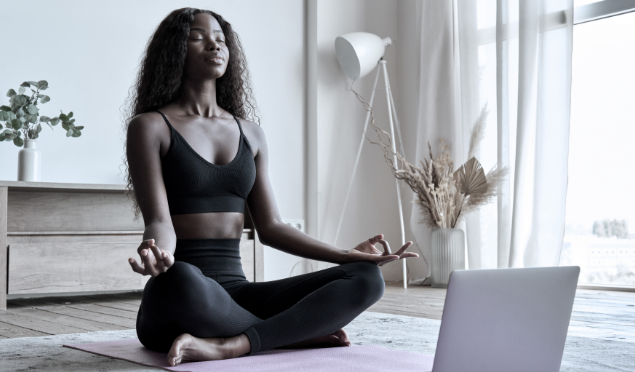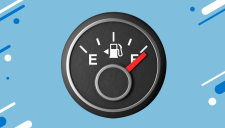Lifestyle changes to lower your blood pressure

Last updated on 20th May, 2022 at 05:01 pm
Untreated and undiagnosed high blood pressure can stalk your veins and lead to serious heart disease – but it’s simple to manage. Here are the lifestyle changes you can make today to lower your blood pressure.
We’ve all felt our blood pressure jump through the roof when angry or stressed – the surge of adrenaline increases your heart rate, pushing blood through your arteries and veins and preparing you for ‘fight or flight’. But when you calm down, it all goes back to normal. Unless you have hypertension, that is.
Around 45% of men and 48% of women older than 15 years in South Africa have hypertension, according to a study in the journal Global Epidemiology. Consistent high blood pressure is the leading cause of heart disease worldwide, according to an article published in the Nature Reviews Nephrology, and is one of the major causes of premature death worldwide. This means it’s time to pay attention to those numbers your doctor always measures when strapping your arm into that tight blood pressure cuff.
Worried about your blood pressure? As a Sanlam Reality Core, Plus or Health member, you can manage your risk and earn tier points by booking a basic medical test at any Clicks pharmacy. A healthcare professional will assess your blood pressure, body mass index (BMI), cholesterol and glucose levels.
What is blood pressure?
Blood pressure is one of your vital signs, along with your heart rate, respiratory rate, oxygen saturation and body temperature. Your vital signs are an indication of your general health. Blood pressure is the force with which your blood pumps through your body, and is measured by both the amount of blood your heart pumps, and how much resistance that blood gets while flowing through your circulatory system. If your arteries are narrow – say, thanks to high levels of cholesterol, which packs your arteries with fatty deposits – your heart needs to work harder to pump blood. Blood pressure is measured with two numbers:
Systolic pressure (the top number)
The pressure in your arteries when your heart beats. A normal reading is less than 120.
Diastolic pressure (the bottom number)
The pressure in your arteries in between heart beats. A normal reading is less than 80.
What is hypertension?
Also known as high blood pressure, hypertension is when your blood pressure consistently measures higher than normal. This causes undue stress on your heart and circulatory system. Hypertension is classified as either primary or secondary. Primary or essential hypertension is the most common by far and is caused by lifestyle and genetic factors, including what you eat and how much you exercise.
Secondary hypertension is a symptom of or due to an identifiable cause such as kidney disease, thyroid problems, or endocrine disease, or is a symptom of medications. Because blood pressure is one of your vital signs, healthcare professionals will usually measure it when you go for a check-up.
What are the dangers?
Hypertension has no symptoms and is known as the ‘silent killer’, according to the Southern African Hypertension Society (SAHS). Four in 10 adults over 25 live with the condition, with half of them unaware of it, estimates the society.
Long-term high blood pressure puts you at risk of a heart attack, heart disease, a stroke, kidney disease and even eye diseases, says the SAHS.
When you know your health information, you can plan better financially for life’s what-ifs and ensure you have the right risk cover in place. As a Reality Health or Reality Plus member, you can get up to 30% off risk cover. Speak to a financial planner about the right options for you. Or learn more about your risk cover benefit as a member, here.
What changes can I make to my lifestyle to manage high blood pressure?
The good news is that you can treat hypertension by making changes to your diet and exercise levels, as well as/or by taking blood pressure medication if prescribed by your doctor.
#1: Follow a healthy diet
“A healthy diet plays a major role in controlling blood pressure, as it contributes to weight loss, promotes physical activity, aids in improving inflammation, and promotes a low-sodium diet,” says registered dietician at Nutritional Solutions, Raffaella Braga.
Braga recommends the DASH Diet (Dietary Approaches to Stop Hypertension). It includes:
- 8-10 portions of fruit and vegetables daily
- Low-fat or fat-free dairy products
- Reducing your meat intake to a third of your usual intake
- Reducing your intake of fats, oils and salad dressing by half
- Reducing your intake of sweets and snacks to a quarter of what you usually consume
As a Reality Club or Reality Access for Sanlam Group Risk member, you get free monthly discount coupons to save on healthy foods at Checkers, Checkers Hyper and Shoprite stores nationwide. Learn more about this benefit here.
#2: Exercise regularly
According to Mayo Clinic, regular physical activity – ideally 150 minutes a week, or about 30 minutes most days of the week – can lower your blood pressure by about 5 to 8 mmHg if you have high blood pressure.
Braga recommends incorporating regular aerobic exercise into your routine, like a brisk walk, a swim, cycle or even dancing. Not only does physical activity help control high blood pressure, but it also helps you manage your weight, strengthen your heart and lower your stress levels.
Want to find a workout that works for you? Sanlam Reality Club, Core, Plus and Health members get up to 80% off monthly gym fees at Planet Fitness and JustGym, which include online gym classes. Click here to find out more.
#3: Reducing your sodium intake
Consistent high salt intake (more than 6g per day) puts strain on your kidneys, which have the thankless job of filtering your blood. Too much salt makes it difficult for your kidneys to work properly, which means everything they are supposed to filter out – from waste to acid to extra water – stays behind. Luckily for your kidneys, you can help things along by reducing your salt intake. Braga has these tips:
- Don’t put salt on the table while eating
- Limit salty snacks such as chips, nuts, and biltong
- Limit cured, salted and smoked meats and fish
- Limit foods in salty brine, such as pickles, olives and feta
- Cut down on processed cheese
- Limit your intake of soy sauce, Worcestershire sauce and tomato sauce
- When eating out, choose food without sauces, and ask for food to be prepared without added salt
- Only use one sodium flavourant per meal – so if you’re using stock cubes, don’t add salt as well, or if you’re using instant soup powder, don’t add a stock cube, too
- Limit your intake of canned meat and vegetables, and processed instant sauces and soups
- Avoid mixed spices such as braai salt – the ‘brown cap’ spices
- Flavour your food with green herbs, garlic, mustard powder, lemon juice, pepper, chillis, coriander, cloves, curry or onions, instead of having a heavy hand on the salt pot.
Book a basic medical test at any Clicks pharmacy to measure your blood pressure, body mass index (BMI), cholesterol and glucose levels, and earn tier points! Learn more here.
Want to learn more?
We send out regular emails packed with useful advice, ideas and tips on everything from saving and investing to budgeting and tax. If you're a Sanlam Reality member and not receiving these emails, update your contact details now.
Update Now







